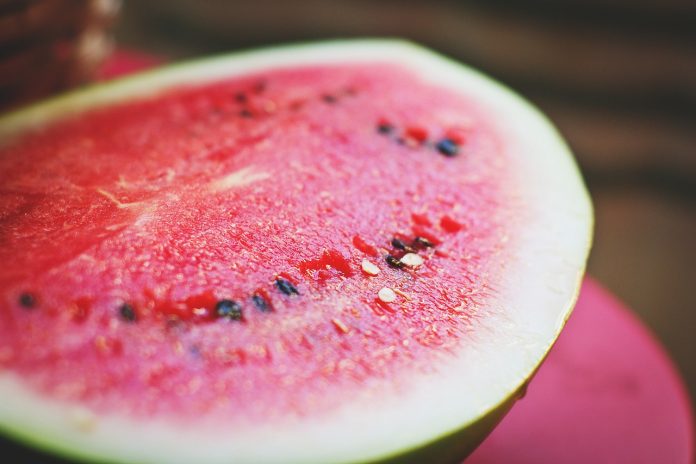By Tracy Turner | Ohio State Chow Line
I just heard a report that a brand of pre-cut melons was tied to a salmonella outbreak recently. How is that possible?
You are right: The Centers for Disease Control and Prevention this week warned about a multistate outbreak of salmonella associated with some pre-cut melons produced by a food distributor based in Indianapolis.
The warning was about fresh, pre-cut melons including watermelon, honeydew melon, cantaloupe, and fresh-cut fruit medley products containing one of these melons. The food items were produced at Caito Foods facility in Indiana and were distributed to Ohio, Georgia, Illinois, Indiana, Kentucky, Michigan, Missouri and North Carolina, CDC said.
The “recalled products were sold in clear, plastic clamshell containers at Costco, Jay C, Kroger, Payless, Owen’s, Sprouts, Trader Joe’s, Walgreens, Walmart, and Whole Foods/Amazon,” CDC said in a statement.
As of June 8, some 60 people were infected by the outbreak, with 31 people having to be hospitalized, CDC said.
Most people who become infected with salmonella typically develop diarrhea, fever, and abdominal cramps 12 to 72 hours after infection. The illness usually lasts 4 to 7 days, and most people recover without treatment. However, for some people, diarrhea may be so severe that they need to be hospitalized, CDC said.
So how can fresh, pre-cut fruit become contaminated with salmonella? There are several ways that fresh produce can become contaminated.
For example, if animal feces are in the field or soil in which the produce is grown, or if the produce comes into contact with water that contains the pathogen, salmonella can be transferred from the feces onto the produce. The pathogen can also be spread if a person who carries the bacteria doesn’t wash his or her hands after using the bathroom, and then processes or prepares the produce.
It’s important to note that there are numerous pathogens that can contaminate produce at any point in the food supply chain.
In fact, salmonella and other bacteria including shiga toxin-producing E. coli, Listeria monocytogenes, and viruses such as norovirus are commonly associated with consumption of fresh produce, according to Barbara Kowalcyk, a food safety expert and an assistant professor in Food Science and Technology for the College of Food, Agricultural, and Environmental Sciences (CFAES) at The Ohio State University.
Fruits and vegetables can also become contaminated during preparation when their skin (which serves as a barrier) is broken, she said.
“If the bacteria are present on the skin of the melon, the bacteria can then be transported to the flesh of the fruit when it is cut,” Kowalcyk said.
For example, cantaloupe skin has nooks and crannies that can house microbial pathogens, even if it looks “clean.” Therefore, melons and other fruits and vegetables should be given a good scrub and rinse before you cut through them with a knife.
Also, cut fruits and vegetables should be refrigerated within two hours and consumed within a few days to prevent bacteria from growing.
According to CDC, here are other methods in the food production chain that can lead to contamination:
- If contaminated water or ice is used to wash, pack, or chill produce, the contamination can spread to the produce.
- Fresh produce can be contaminated if it is loaded into a truck that was not cleaned after transporting animals or animal products.
- If refrigerated food is left on a loading dock for a long time in warm weather, it could reach temperatures that allow bacteria to grow.
- If a food worker remains at work while sick and does not wash his or her hands carefully after using the bathroom, he or she can spread germs by touching food.
- If a cook uses a cutting board or knife to cut raw meat and then uses the same knife or cutting board without washing it to slice tomatoes for a salad, for example, germs from the meat can contaminate the tomatoes.
Here are steps you can take to lessen your chances of getting a foodborne illness from produce, CDC says:
- Don’t eat recalled products. Check your fridge and freezer for those items and throw them away or return them to the place of purchase for a refund.
- If you don’t remember where you bought pre-cut melon, don’t eat it; throw it away.
- Wash fresh produce before preparing or eating it.
- Wash your hands for at least 20 seconds with soap and warm water before and after fresh produce preparation.
Chow Line is a service of The Ohio State University College of Food, Agricultural, and Environmental Sciences (CFAES) and CFAES’ outreach and research arms, Ohio State University Extension and the Ohio Agricultural Research and Development Center. Send questions to Chow Line, c/o Tracy Turner, 364 W. Lane Ave., Suite B120, Columbus, OH 43201, or turner.490@osu.edu.













